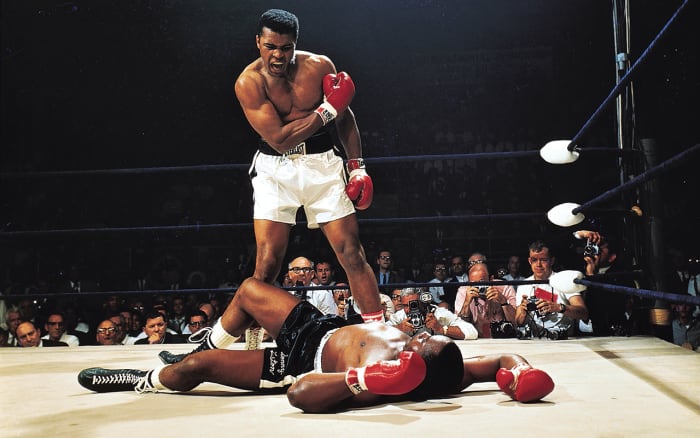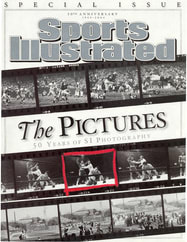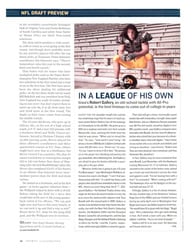The Pictures
As much of an influence as Sports Illustrated has had upon the
literature of sports over the past 50 years, it probably has had
even more of an impact upon sports photography. After all,
whereas newspaper sports pages had been around since the 1880s
and a whole genre of sportswriting had grown up, sports
photography was not nearly as advanced as a discipline when SI
debuted in 1954. Pictures tended to be posed, and often in a
hackneyed manner--how many clutch hitters were asked to kiss
their Louisville Sluggers? And while technological advances in
cameras, such as the big Speed Graphics, had improved action
pictures, sports photos tended to a stylized sameness. The only
photographer who was well-known for his distinctive work in
sports was the appropriately named Ozzie Sweet, who took rich,
dreamy portraits for Sport magazine.
Longtime SI photographer Neil Leifer--who got his
professional start in 1958, as a brash teenager, volunteering to
wheel invalids onto the sidelines of Giants football games, then
uncovering his hidden camera and shooting surreptitiously--puts
it this way: "For sports photographers in the '50s and '60s,
Sports Illustrated wasn't just the major league. It was the only
league." SI photographers were given the time and resources that
newspaper shooters never had to prepare for their assignments.
This was vividly evident from Day One, when for the first lead
story in the first issue of the magazine Mark Kauffman
handicapped the race between the two original four-minute milers,
Roger Bannister and John Landy. He did not set up his camera at
the finish line; instead he took a position near the head of the
stretch because it was there, he forecast, that Bannister would
try to pass Landy. Kauffman was dead-on, perfectly catching the
crucial moment in the Mile of the Century.
Lighter, more mobile cameras and increasingly sophisticated
equipment also allowed inventive photographers, notably John
Zimmerman, to take photographs from places where cameras had
never gone before: in a hockey goal, on a basketball
backboard. The new young sports photographers--especially Leifer
and Walter Iooss Jr.--grew up in the craft, quickly
catching on to all the new devices, skillfully zeroing in on the
action with telescopic lenses. So much of the SI photography was
close-up, revealing a new intimacy.
Leifer and Iooss shot live action or perfectly posed covers with
equal facility. (And Iooss was also the match of any fashion
photographer when the Swimsuit Issue came into its glory.) That
versatility was crucial to the magazine's development because in
the early years color processing took weeks, so color photos of
breaking news could not be used. Early in the magazine's history,
being selected to pose for a Sports Illustrated cover became,
more than anything else in America, the ultimate certification of
an athlete's majesty.
Having worked with so many photographers since joining the SI
staff in '62, I know that they are addicted to saying, as they
shoot frame after frame, "Just one more." I will say that myself
as I turn these pages and savor the images here.


